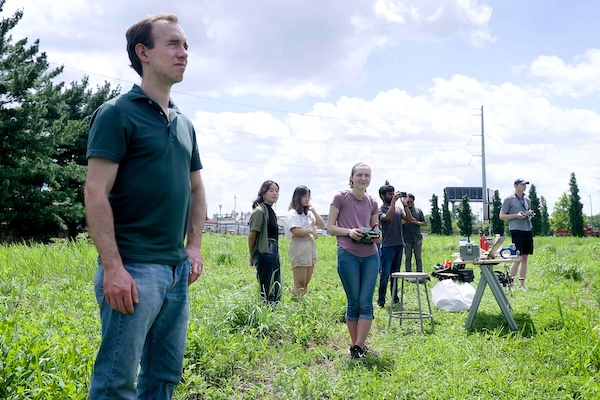
On Feb. 6, 2023, massive earthquakes struck Turkey and Syria. Measuring 7.8 and 7.7 on the Richter scale and felt as far away as Egypt, the temblors damaged an area the size of Germany. The disaster affected nearly one-sixth of Turkey’s population, the equivalent of a single natural disaster impacting 48 million Americans.
In the immediate aftermath, first responders faced a dilemma. With so many collapsed buildings, where should they focus their efforts? Local emergency services were overwhelmed. The critical window for finding victims after an earthquake is 72 hours, any longer and survivors may perish from a lack of food, water, and medical care.
“Triage, I think the root of the word is sorting,” says Jeremy Cannon, professor of surgery at the Perelman School of Medicine and an Air Force veteran who deployed to Iraq and Afghanistan as a trauma surgeon. “You’re trying to sort patients to identify who will benefit from immediate therapy, who is going to make it and survive regardless of what you do.”
And, of course, there is the fact that part of triage is deciding who is too far gone to save. “This is traditionally challenging when there is gunfire or explosions, or in the setting of, say, an earthquake,” Cannon says. “It’s often fraught with danger, so first responders are in many instances putting themselves at risk to perform this initial sorting of patients.”
Last year, the Defense Advanced Research Projects Agency (DARPA), the research arm of the Pentagon, announced a challenge to spur innovation in triage, specifically for mass casualty incidents (MCI), which by definition overwhelm local health care systems. “DARPA wants teams to develop ways to use robots and drones to help with the triage process,” Cannon says. “It’s sort of futuristic, almost science fiction, because it involves not just identifying injuries but assessing vital signs and patient physiology.”
Penn Robotic Non-contact Triage and Observation (PRONTO) team is brings together experts in trauma from Penn Medicine and experts in robotics and computer vision from the School of Engineering and Applied Science and the General Robotics, Automation, Sensing, and Perception (GRASP) Laboratory.
“I’m super impressed that we even have a spot at the table,” Cannon says. “But I think that really speaks to Eric’s reputation for excellence and his innovative mind and the great team that he’s been able to assemble.”
“The goal,” Eric Eaton says, “is when something like this happens the first responders roll up, press a big red button, and off go a couple of ground robots and aerial robots to survey the area.” Eaton is a research associate professor in computer and information science (CIS) at Penn Engineering, a core faculty member of GRASP Lab, and PRONTO’s principal investigator.
Read the full story, by Ian Scheffler and Nathi Magubane, in Penn Today
